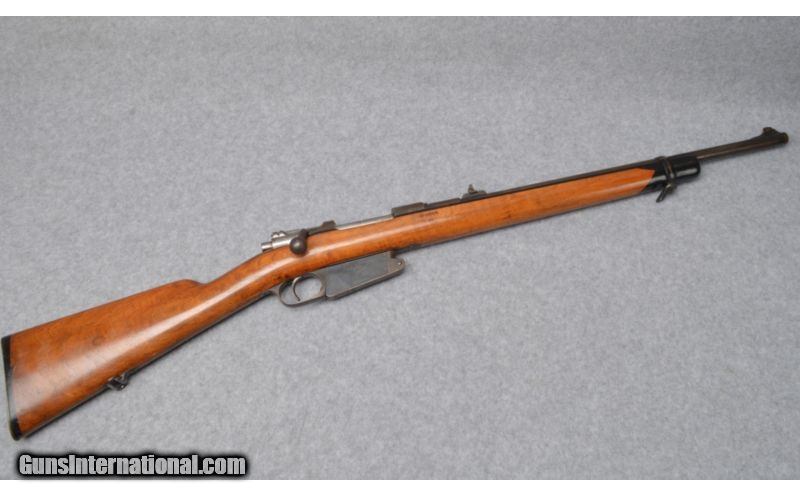

The exterior shape of the case was designed to promote reliable case feeding and extraction in bolt-action rifles and machine guns alike, under extreme conditions.ħ.65×53mm Mauser maximum C.I.P. The 7.65×53mm Mauser has 3.70 ml (57.1 grains H 2O) cartridge case capacity. Norma, Prvi Partizan, and Fabricaciones Militares (FM) currently produce 7.65×53mm ammunition. Sporting ammunition in this caliber is still loaded in Europe. ammunition manufacturer to still produce this cartridge. This cartridge was loaded commercially by many manufacturers in the United States until about 1936. Judging by the dimensions of the casing, it was developed from Mauser's Patrone 88 adopted into German service. At the time of its development it was a high-performance smokeless-powder cartridge. The 7.65×53mm Mauser was the result of considerable experimentation by Paul Mauser to optimize the bullet diameter for use with the new smokeless propellant introduced as Poudre B in the 1886 pattern 8mm Lebel that started a military rifle ammunition revolution. It is also known as 7.65×53mm Argentine, 7.65×53mm Argentine rimless, 7.65mm Argentine, 7.65×53mm Belgian Mauser or 7.65mm Belgian (in the United States) and 7.65×53mm Mauser (in Belgium).īallistically it is comparable to the. by the C.I.P.) is a first-generation smokeless powder rimless bottlenecked rifle cartridge developed for use in the Mauser Model 1889 rifle by Paul Mauser of the Mauser company. The 7.65×53mm Mauser (designated as the 7,65 × 53 Arg. They are a very capable rifle.Source(s): Cartridges of the World, 11th ed Maybe ask $ 400 and see what counter offers you get. There are a fair number of these rifles in this condition for sale, so it really isn't a rarity. The last Model 1891/09 rifle in comparable condition that sold - to my knowledge - went for $ 300 four years ago. People are asking crazy high dollars on GunBroker, but none are selling. The value of your rifle is hard to estimate. When Firma Lowe was not beset by the exigencies of war, they turned out the very best quality military rifles possible. The Nazis seized his trust in the early 1930's and it was never returned. Eventually the disaster which was post war Germany caught up with them and they had to refinance and give up majority control. Lowe and his descendants were fairly astute businessmen and kept Germany's firearms sector alive after WW I when the rest of the country was falling apart. He and his family trust owned the controlling interests in Mauser and DWM which stayed in his family until the mid 1920's when DWM was broken up and reorganized as several firms. Offbeat note: Lowe was Jewish, as were his descendants.

No FFL is necessary to ship or transfer it. All told, a typical Argentine Model 1891/09. Bore looks OK, with maybe a bit of frosting. Yes, your rifle was upgraded to the Model 1891/09 standard. The barrel of my Model 1891/09 carbine appears to have been set back and rechambered, but I have seen other Model 1891/09 carbines which were obviously rebarreled. The chamber throat is also much longer on the early carbine than my Model 1891/09 carbine. Their rear sight bases are identical, but the ladder graduations are different. The later Model 1891/09 carbine rear sight goes to 1,400 meters. I do have a Model 1891 cavalry carbine with a sight which only goes to 1,300 meters.

The Argentines apparently did not consider it a high priority to convert all the carbines. I have never seen a long rifle with the early ladder sight, but have seen a number of cavalry carbines with early rear sights. The later Model 1891/09 rifle sights are graduated to 2,000 meters. He did not have such a rifle, but had handled one in Rosario while he was collecting information for a book he was writing. An advanced collector told me that the early Model 1891 sights only went to 1,800 meters. The original Model 1891 ladder sights for RN bullets had shorter maximum ranges.


 0 kommentar(er)
0 kommentar(er)
